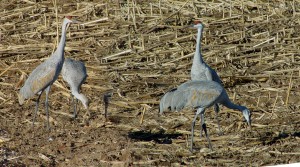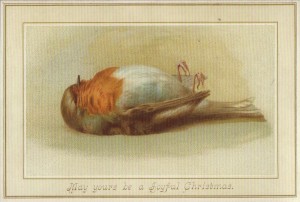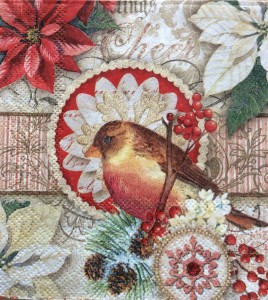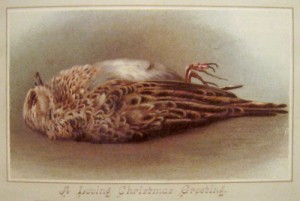Category Archives: birding
Railroad Trespass Hearings by Greg Koelker
Thank you, Greg Koelker for detailed report on Mississippi River Railroad Trespass Hearings. This is a significant issue for all of us along the Upper Mississippi River. If folks are not allowed to cross the railroad tracks. the trains which rattle our countryside constantly will also become a FENCE to separate us from the recreational resources we ALL love most about the river. It is worth paying attention to the discussions. ~Pat
Railroad Trespass Hearings by Greg Koelker
Some 200 hunters, fishermen, trappers, birders, snowmobilers, business owners, community leaders, government employees and other concerned Mississippi River recreation enthusiasts showed up to be heard by State Senator Jennifer Shilling, Tim Yager from the Department of Fish and Wildlife, and the Railroad Commissioner of Wisconsin, Yash Wadhwa at the De Soto Community Center and Stoddard Legion on April 22.
After introductions, Tim Yager informed the group that there has been investigation into 17 to 18 additional rail crossings along the Mississippi with good line of sight. He added that these could cost between $15,000 and $250,000 each. He said that the position of the USFW is that they want safe and adequate access to the over 240,000 acres of the Upper Mississippi River Refuge. The river is bordered by railroad tracks on both shores.
Dan Knapek of De Soto asked what percent of the railroad’s profit would it take to create the needed rail crossings. Commissioner Wadwa said there were already 26 possible crossings being investigated. They are looking to define all options and look into shared cost.
Long time member of the Wisconsin Conservation Congress, Bill Howe of Prairie du Chien said, “The railroad’s desire to limit access entirely impacts the entire rail system in this country.” Howe called the railroad’s position, “…a great threat.” He added that 15 to 20% of railroads are not on their own lands.
Dan Trawicke of Waukesha, representing the Safari Club, said, “This is not just a Western Wisconsin problem.” He said that safety is a number one concern, but he added that it takes common sense. “Additional crossings are not the answer,” said Trawicke, “we have a constitutional right” to access those lands.
Greg Koelker of Stoddard said, “Safely crossing a railroad track is no different that safely crossing a highway. Look both ways and listen. Then cross if it is safe. Every first grader knows that.” He added, “. . . no amount of legislation will change the minds of suicidal people, drunks, idiots trying to beat a train, protesters of whatever, and especially not terrorists.” Koelker brought up the long tradition of using the tracks to access the river. “I grew up near Cassville and my dad and I would walk the tracks to access ice fishing sports on Bertram Lake. For years, our family members crossed the tracks to trap and hunt ducks and deer and even morel mushrooms. I used to cross the tracks at Shady Maple to ice fish with my family. I have friends who cross the tracks to hunt ducks out on peninsulas along the river. There is no other way to get to those waters for much of the year.” Koelker said he hears from legitimate sources that at least 50% of our legislators already support the change. He added that, “I understand that the Railroad Commissioner has the power to order placement of railroad crossings. I urge you to consider directing more pedestrian railroad crossings and to support changing the trespass law to allow direct crossing of the tracks.”
Click this link to continue reading Greg’s report.
Rail Trespass Law Hearing, Stoddard, WI. Continued.
Marc Schulz of the La Crosse County Conservation Alliance said of the trespass issue, “There is no bigger issue regarding the river.” He added that greatests percentage of fatalities on the railroad happen at designated crossings. Schulz said that, “Young professionals come to western Wisconsin because of its natural resources.” He added that, “This is the people’s land and water.”
John Wetzel representing the Wildlife Federation said, “We need more state oversight. Minnesota has done that. He added that this isn’t just a Mississippi River corridor problem saying there are, “. . .hundreds of places in the state where this is a problem.”
Pat McCabe of De Soto said, “I have property on the other side of the tracks. I will not stop crossing.” He added, “I beg you make them (trains) slow down. Who are you going to call? (if there is an accident.)”
Guy Wolfe of Stoddard representing CARS-Citizens Acting for Rail Safety said, “There is a public trust doctrine law. We have a right to these waters.” He added that he has seen derailed cars on both sides of the tracks on “our property.” He urged people to photograph and report issues with the tracks and rail bridges. He said he feels that after reports about decaying rail bridges the railroad started enforcement of the trespass law. He said after letting the permit to repair the Coon Creek bridge at Stoddard expire, the railroad suddenly worked “24-7” to repair it. Wolf added that at least one bridge still in use along the river was built in 1867. He said, “We can’t afford to let (rail) bridges fail.”
Commissioner Wadhwa replied that, “The new fast act law requires that we put bridge inspection results on websites.”
Kirk Holliday of De Soto said that, “BNSF is making threats to the village sewer.” De Soto’s wastewater treatment plant is across the tracks on the river side. He added, “The government bails them (the railroads) out. They get billions to fix their problems and then they basically hold us hostage.”
Gary Moltert of De Soto told about railroad rolling stock that hauls Bakkum crude and ethanol. He said, “Double hulled tankers are safer. Canada is being very proactive enforcing this. Here investors have $80 to $90K in old tankers and the government allows them six years to replace them with safer cars.”
Commissioner Wadhwa replied, “We can’t do anything, but the feds and USDOT can.” He added that, “New tank cars constructed after 2015 and existing cars must be retrofitted and have an advanced brake system installed.”
Sherry Quamme, representing the Mississippi River Parkway Commission said that, “We’re concerned with Wisconsin issues for eight counties of the Great River Road . . . we want to see that there is legal pedestrian access . . . additional crossings are not the answer because it requires a large capital investment.”
Mike Collins of the La Crosse Snowmobile Alliance said, “We purchased a building across the tracks. We asked the railroad for a recreational crossing. We asked them for $6,000.” The railroad denied the request. Collins added, “They said it’s a safety issue. It’s not. It is straight and level for miles.”
Frank LeMay commented that, “Point of access changes won’t work because the river changes from day to day.”
Joan Wolfe of Stoddard asked about changing Act 179, “What’s the downside? Why wouldn’t the governor want to sign it?”
Senator Schilling said that, Assembly leader Van Wanggaard didn’t bring up the trespass law change proposed by 96th Assembly District representative Lee Nerison in the Assembly because, “Governor Walker would likely veto it and the Republicans in the legislature don’t want to be put in the position of overriding the governor’s veto.”
Phillip Hooker of Victory said that the railroad speed limit is too high. “It should be 45 mph max,” he said.
Monique Hooker of Victory expressed her concern about being able to do river cleanups, “The Friends of Pool 9 need to clean along the Mississippi and on the Wisconsin side. Students and volunteers need access to clean up the river banks. We have to look at the environmental issue and put your money where your mouth is.”
Ralph Knutson of De Soto said, “We need more rail inspections. There is no state accountability – no rail inspectors.” He added that, “The railroad is also interested in having only one person on a train to operate it to save money.”
Commissioner Wadhwa said that, “The federal safety board is taking comments on fewer crew.”
Senator Shilling added, “There is a bill in progress to improve emergency preparedness along the railroad and to train first responders to deal with (railroad) emergencies.”
A larger group attended the 1 PM session at Stoddard. More than half a dozen people said they had received trespassing warnings from BNSF officers. The railroad calls it, “ a public safety education campaign.”
Vernon County Sheriff John Spears asked those who received warnings if the officers were polite and courteous. They all replied, “No.” Spears who supports a compromise, told the Stoddard crowd that his deputies were not enforcing the law. “If anybody gets arrested, they’re not spending a night in my jail. That’s for sure,” he said.
Dick Jensen of Stoddard said, “It’s almost like that railroad track now is a fence.”
Richard Meyer of La Crescent, Minn. ““This whole situation has damaged the state’s reputation and the railroad’s,” he said. “People are furious.”
Mike Widner of Boscobel, “The only folks who will likely obey the laws are hunters, fishers and trappers.”
Stoddard Village President Kevin Gobel said, “The enforcement campaign started soon after rail safety groups and the village complained about the condition of BNSF’s bridges.”
Help Needed…Mississippi Valley Conservancy Bird Survey
Birders! Mississippi Valley Conservancy needs your HELP! We are seeking volunteers to look and listen for birds to help determine presence or absence of declining bird species on different sites throughout southwest Wisconsin. Volunteers essentially would go to a 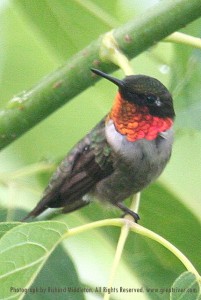 site in early morning and make a list of any birds seen and/or heard. Sites vary between MVC nature preserves or private lands MVC is working to protect. These bird lists provide invaluable information will help to guide our restoration activities and prioritize sites with breeding populations of declining birds. If interested, email Abbie Church, MVC Conservation Director at achurch@mississippivalleyconservancy.org with your preference for habitat (forest, wetland, grassland); geographical interest (La Crosse County, Monroe County, anywhere, etc) and availability. We’re hoping to schedule site visits throughout May. Sites include woodlands, grasslands, and pastures in Trempealeau, La Crosse, Jackson, Monroe, Crawford, and Vernon Counties.
site in early morning and make a list of any birds seen and/or heard. Sites vary between MVC nature preserves or private lands MVC is working to protect. These bird lists provide invaluable information will help to guide our restoration activities and prioritize sites with breeding populations of declining birds. If interested, email Abbie Church, MVC Conservation Director at achurch@mississippivalleyconservancy.org with your preference for habitat (forest, wetland, grassland); geographical interest (La Crosse County, Monroe County, anywhere, etc) and availability. We’re hoping to schedule site visits throughout May. Sites include woodlands, grasslands, and pastures in Trempealeau, La Crosse, Jackson, Monroe, Crawford, and Vernon Counties.
Mississippi Valley Conservancy | PO Box 2611, 1309 Norplex Drive, Suite 9, La Crosse, WI 54601 | 608.784.3606 ext 2 | www.MississippiValleyConservancy.org
“First Day” Sightings of Sandhill Cranes along Pool 8, Since 1987
Our farm lies perched above a broad wetland valley. Back in the mid-80s I heard something we had never heard before, the unison calls of a pair of nesting sandhill cranes. When it was verified by our local conservation warden and by the University of Wisconsin, we could claim to have reported the first nesting pair of sandhill cranes in the La Crosse area in a very long time.
Since then, our neighborhood has maintain a spring “Crane Watch.” Some of those dates and comments appear below. For more recent years, please use the SEARCH button to 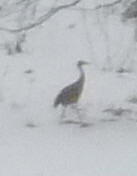 see stories about the cranes! The quote at the end of this piece is one of my favorites from Aldo Leopold.
see stories about the cranes! The quote at the end of this piece is one of my favorites from Aldo Leopold.
3/2/2011 “Eight Sandhill Cranes arrived TODAY, making their earliest arrival in our records. Ground is still frozen with several inches of crusty snow. ”
March 12, 2008 “3 Sandhill cranes fly over Goose Island near La Crosse.
March 11, 2007 “Sandhill Cranes on the islands off Goose Island Park south of La Crosse. Temps in upper 40s, two weeks after record snowfalls in Western Wisconsin, so lots of snow on the ground. March 12 the cranes are reported along Coon Creek and other valleys off the Upper Mississippi River.”
Feb 23, 2005 (a good two weeks earlier than normal!)
March 15, 2003
March 13, 2002
March 13, 2001
March 1, 1998
March 10, 1997
March 13, 1996
March 18, 1993
April 4, 1992
March 9, 1988
March 17, 1987
Excerpt from A Sand County Almanac by Aldo Leopold
“The sadness discernible in some marshes arises, perhaps in their once having harbored cranes. Now they stand humbled, adrift in history.
“Someday, perhaps in the very process of our benefactions, perhaps in the fullness of geologic time, the last crane will trumpet his farewell and spiral skyward from the great marsh.
“High out of the clouds will fall the sound of hunting horns, the baying of the phantom pack, the tinkle of little bells, and then a silence never to be broken, unless perchance in some far away pasture of the milky way.”
–Aldo Leopold, Marshland Elegy
Feb 27 … Ice is disappearing, Eagles abundant, the First Sandhill arrives!
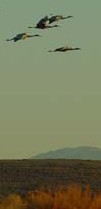 The 50 degree day this weekend made for a great trip along the river. We found the downstream sides of the Locks to be crowded with fishing boats. 38 below the Genoa dam.
The 50 degree day this weekend made for a great trip along the river. We found the downstream sides of the Locks to be crowded with fishing boats. 38 below the Genoa dam.
Bald Eagles clustered… sometimes as many as 12 in close proximity… fishing along the edge of melted ice sheets. My guess is that as the ice melts, fish carcasses are released to make an easy meal for our favorite scavengers! At one spot, I quickly counted 12 eagles and then left uncounted a much larger cluster of fishing and flying eagles just beyond.
Prairie du Chien had their annual Eagle Days this coming weekend, March 5, .Ferryville offers theirs. Eagle days are an excellent time for visitors to have access to expert guides in accessible spots in our small town communities!
It was hard to imagine that our Sandhill Cranes would let a 50 degree day slip by without making a run for Wisconsin, so we made it home by 5 to form a welcoming committee. Sure enough, a single crane came in by 5:15 pm. Like the last crane to leave 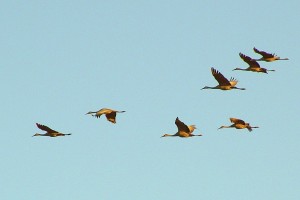 the valley in October, this first arrival was mostly focused on finding out who might already have arrived. Its calls were constant as it moved eastward from the river, but no responses as yet. By March 13, most of our local birds will be settled in and claiming their nests.
the valley in October, this first arrival was mostly focused on finding out who might already have arrived. Its calls were constant as it moved eastward from the river, but no responses as yet. By March 13, most of our local birds will be settled in and claiming their nests.
I have to say this was the first time in 15 or 20 years of crane watching that I have been so confident the cranes would show up that I have literally set up a lawnchair to wait for them!! What a wonderful river valley to call home! You can find a HISTORY of Sandhill Crane arrival dates I’ve recorded in a near-by post. Use the SEARCH option to find previous posts on Eagles, Pelicans, and Sandhill Cranes along the Mississippi River!
Answer to Dead Birds and Christmas Joy… and the story of the Christmas Bird Count!
So what possessed Victorians to send Christmas and other greetings with illustrations of dead birds? One such card reads, “Sweet messenger of calm decays in peace Divine.”
It may hark back to an archaic English celebration of St. Stephens Feast Day, on Dec 26, when folks went out and killed a robin… or a wren… and saved the feathers for good luck. Often young boys in the village would visit homes and exchange feathers for a treat!
During medieval times, Dec 26 was the only day when a wren, considered sacred, could be killed. In fact, “King Wren” was paraded through the village in its death box… which may actually date back further to a Druid tradition when the priest-king of the tribe was sacrificed to avert disaster for the tribe. Over time, English robins replaced the wren as the symbol.
But were the Victorians really connecting dead birds to tribal druid kings? According to Chan Robbins from an Audubon Science video on Vimeo, another Christmas tradition evolved in New England before the turn of the century which involved birds and small mammals.
The townsmen on Christmas Day engaged in a holiday tradition known as the Christmas “Side Hunt”: They would choose sides and go afield with their guns to shoot as many birds and species as they could that afternoon. The resultant pile of feathered (and furred) quarry were sorted by species and counted. The team which had shot the most, won.
Conservation was in its beginning stages around in that era, and many observers and scientists were becoming concerned about declining bird populations. Beginning on Christmas Day 1900, ornithologist Frank M. Chapman, an early officer in the nascent Audubon Society, proposed a new holiday tradition-a “Christmas Bird Census”-that would count birds during the holidays rather than hunt them.
So began the Christmas Bird Count. Thanks to the inspiration of Chapman and the enthusiasm of twenty-seven dedicated birders, twenty-five Christmas Bird Counts were held that day. Those original 27 Christmas Bird Counters tallied around 90 species on all the counts combined. So there is the answer to why we have an annual bird count in the middle of our northern winter!
English robins continue to festoon modern Christmas cards, though they are alive and nestled among poinsiettas and berries!!
With that, I would like to wish all of you a Very Merry Christmas season!
Pat
Dead Birds and Christmas Joy?!
What could possibly be the connection Victorians saw between dead birds and Christmas?!
Please comment! Come back before Dec 19 to see my tie-in!
“It is an illustration of the song/nursery rhyme, ‘Who killed Cock Robin?’ Not very christmassy, I agree.”
“It also might have something to do with the Wren King parades in the UK that happen around Dec 26. They used to parade with a real dead bird, but I believe they use a fake bird now. Maybe some connection…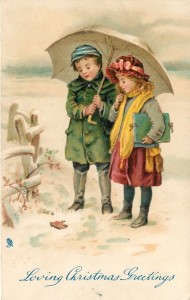

Tundra Swans, Migrating Eagles
Anyone out to enjoy the last vestiges of fall color along the Upper Mississippi River might enjoy keeping a pair of binocs handy. Some of our larger raptors and waterfowl are on the verge of departing the area and it is a great opportunity for viewing

Eagles are also abundant as the summer and winter Bald Eagles make the winter switch. Our summer residents are soon leaving for permanently open water closer to the mouth of the Ohio, Eagles from the north are moving down to their hunting snags located at the pools. Are you seeing a Golden Eagle? It’s possible!

Saw 14 Eagles flying between Hwy 35 and a bluff top near Genoa on 10/29/15. Others have also reported seeing large and small clusters. Listen for their chittery calls as they interact!
Please use the Search option at the top of the page to read more from our RAMBLIN’ ON Blog about Tundra Swans and Eagles on the Upper River.
Fall Color Peaks
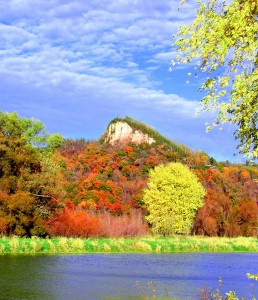

Check out the march of color in the next post. Call hotlines ahead or check online for best color in the 10 Mississippi River states!
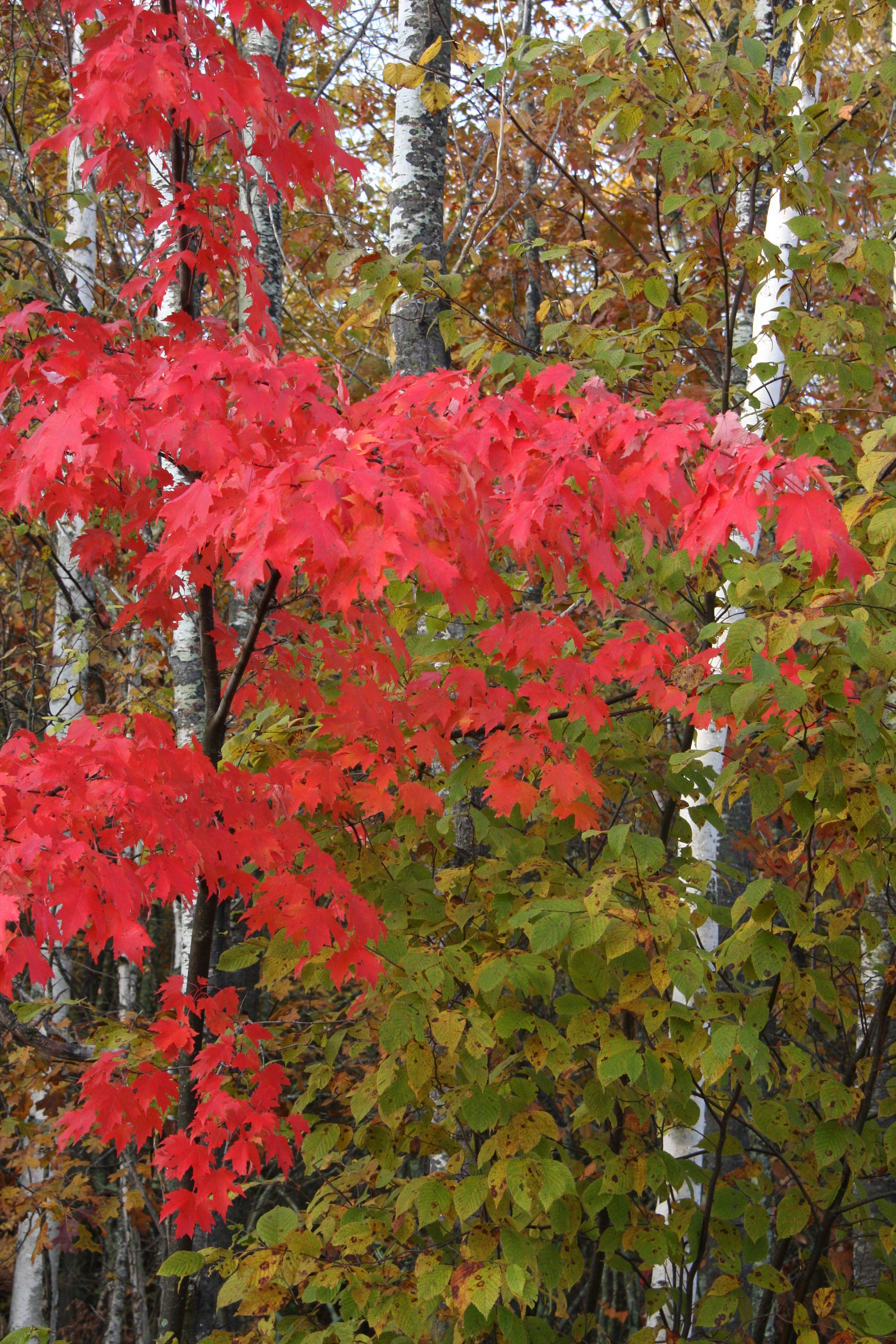

A few bright yellow aspens and birch still have their leaves, and hickories are sporting some orangish brown. The last leaves to drop are the oaks, so once the bluffs turn a rich uniform brown, we know the color season has nearly ended. Softwoods in the river bottoms are steadily losing leaves that never become really brilliant.
Additionally, Hummers are gone, and Sandhill cranes departed our valley. Pelicans have gathered up along the river and look like heavy clumps of pure white snow. Egrets and Great Blue Herons are still on the backwaters. Duck hunting is in full swing and adult American Bald Eagles are abundant! Color is great, but lots more to see along your route!


